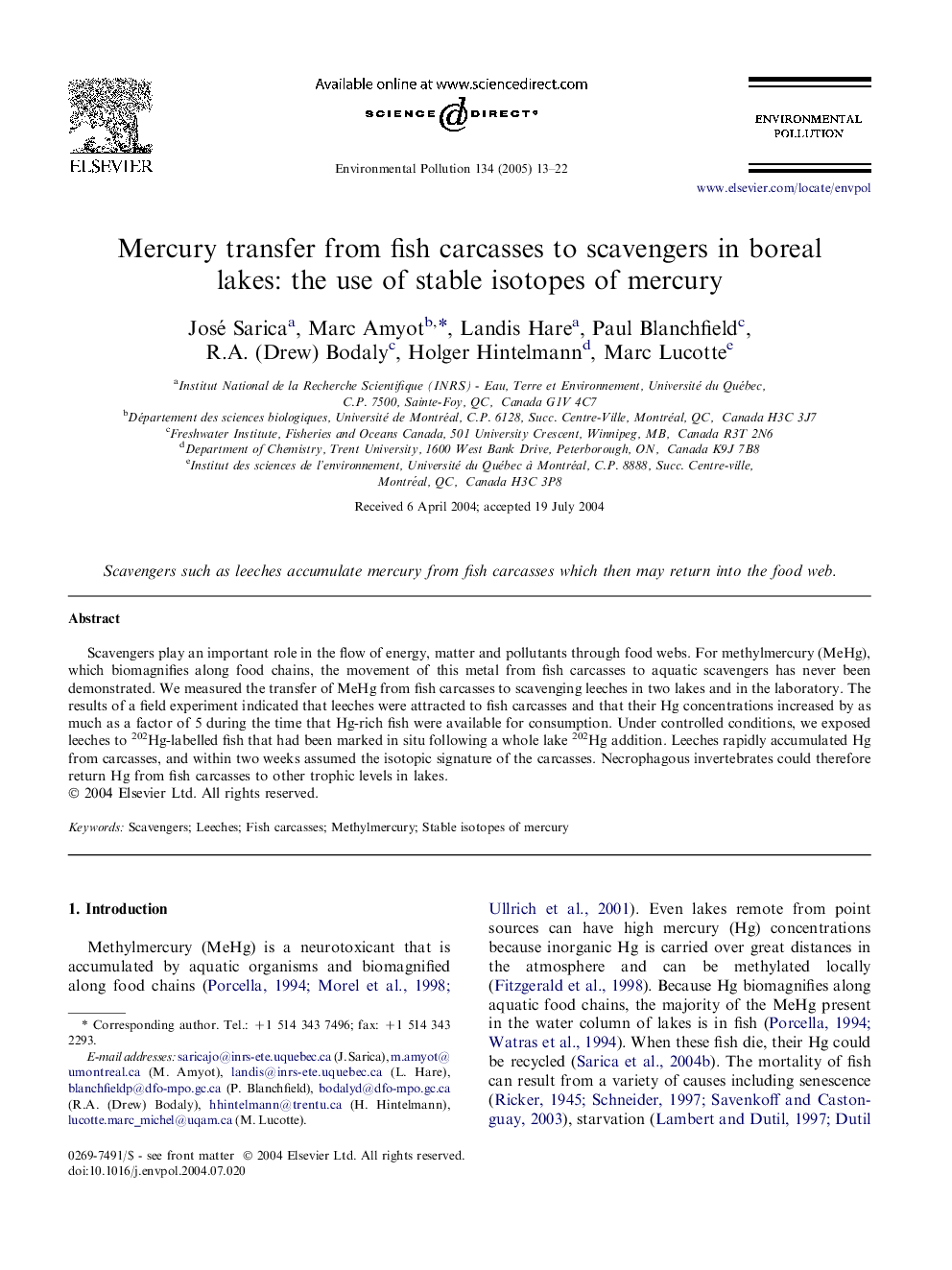| Article ID | Journal | Published Year | Pages | File Type |
|---|---|---|---|---|
| 9456421 | Environmental Pollution | 2005 | 10 Pages |
Abstract
Scavengers play an important role in the flow of energy, matter and pollutants through food webs. For methylmercury (MeHg), which biomagnifies along food chains, the movement of this metal from fish carcasses to aquatic scavengers has never been demonstrated. We measured the transfer of MeHg from fish carcasses to scavenging leeches in two lakes and in the laboratory. The results of a field experiment indicated that leeches were attracted to fish carcasses and that their Hg concentrations increased by as much as a factor of 5 during the time that Hg-rich fish were available for consumption. Under controlled conditions, we exposed leeches to 202Hg-labelled fish that had been marked in situ following a whole lake 202Hg addition. Leeches rapidly accumulated Hg from carcasses, and within two weeks assumed the isotopic signature of the carcasses. Necrophagous invertebrates could therefore return Hg from fish carcasses to other trophic levels in lakes.
Keywords
Related Topics
Life Sciences
Environmental Science
Environmental Chemistry
Authors
José Sarica, Marc Amyot, Landis Hare, Paul Blanchfield, R.A. (Drew) Bodaly, Holger Hintelmann, Marc Lucotte,
